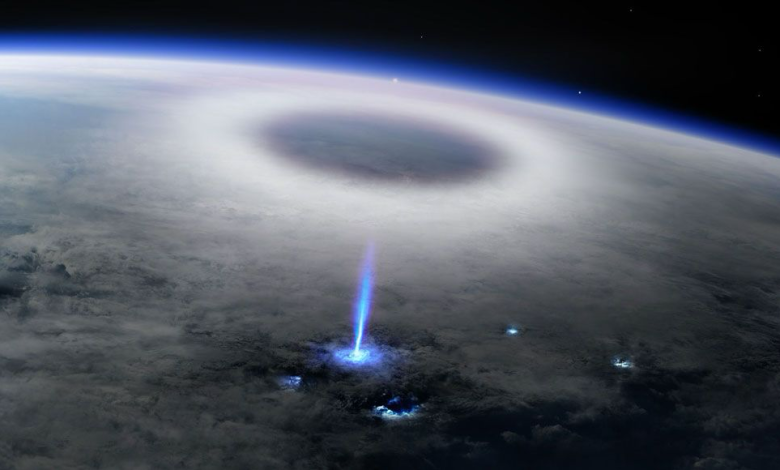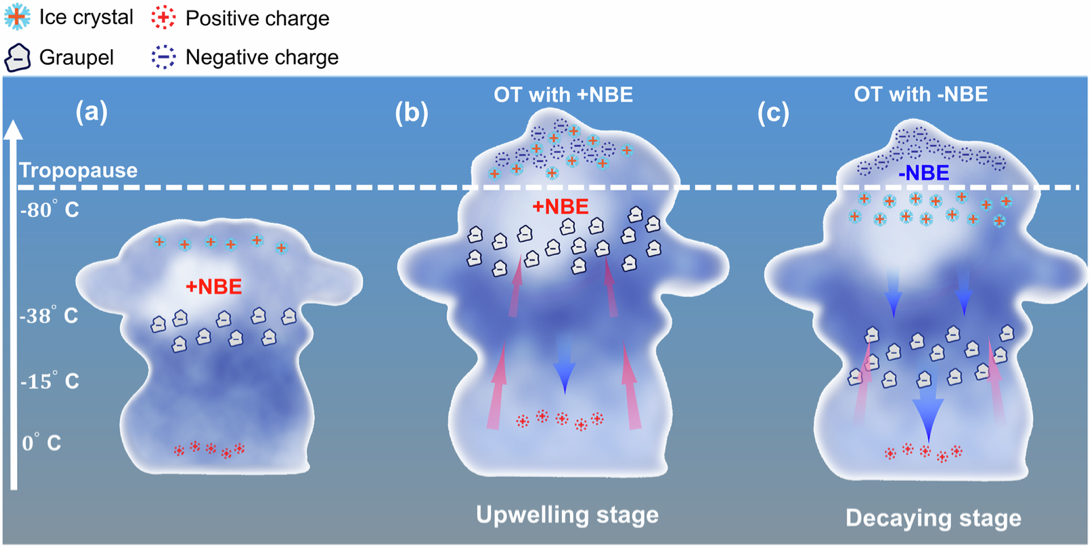USTC’s New Insights into Polarity Competition Mechanisms of Thunderstorm Cloud-Top Corona Discharges

A research team from the University of Science and Technology of China (USTC) has contributed to the understanding of the mechanisms behind corona discharges occurring at the tops of thunderstorm clouds. Guided by Professors Lei Jiuhou, Zhu Baoyou, and Associate Professor Liu Feifan, the team published its findings in the journal *Nature Communications* on August 26. This research introduces a new conceptual model that may modify existing interpretations of high-altitude electrical discharges.
Understanding Corona Discharges
Corona discharges, which manifest as blue flashes ascending from thunderstorm tops into the stratosphere, play a vital role in transferring energy and materials from the troposphere to the upper atmosphere. In particular, narrow bipolar events (NBEs) are known to influence greenhouse gas concentrations, including nitrogen oxides and ozone, in the stratosphere, impacting the Earth’s radiation balance.
Traditional Perspectives and Challenges
Traditionally, cloud-top discharges have been attributed to charge imbalances within clouds, largely influenced by conventional lightning activity. However, factors such as cloud cover and Rayleigh scattering have complicated efforts to understand the precise mechanisms initiating these discharges.
Research Methodology
The USTC research team employed an advanced ground-based lightning detection system to monitor NBEs during a typhoon along the Chinese coastline. Their observations revealed a notable polarity competition among various types of NBEs at the cloud tops. The research indicated that positive NBEs are more prevalent during the convective uplift phase at the cloud’s overshooting top, while negative NBEs primarily occur during the convective downdraft phase associated with cirrus plumes in the lower stratosphere.

Implications of the Findings
This new information led to the development of a model suggesting that the intensity of convection affects the altitude of charged layers within clouds, thereby determining the frequency of cloud-top discharges. These findings contribute to a deeper understanding of cloud-top discharge mechanisms and their implications for stratospheric chemistry, providing a framework for future research on the roles of thunderstorms in atmospheric processes.
Source: University of Science and Technology of China




